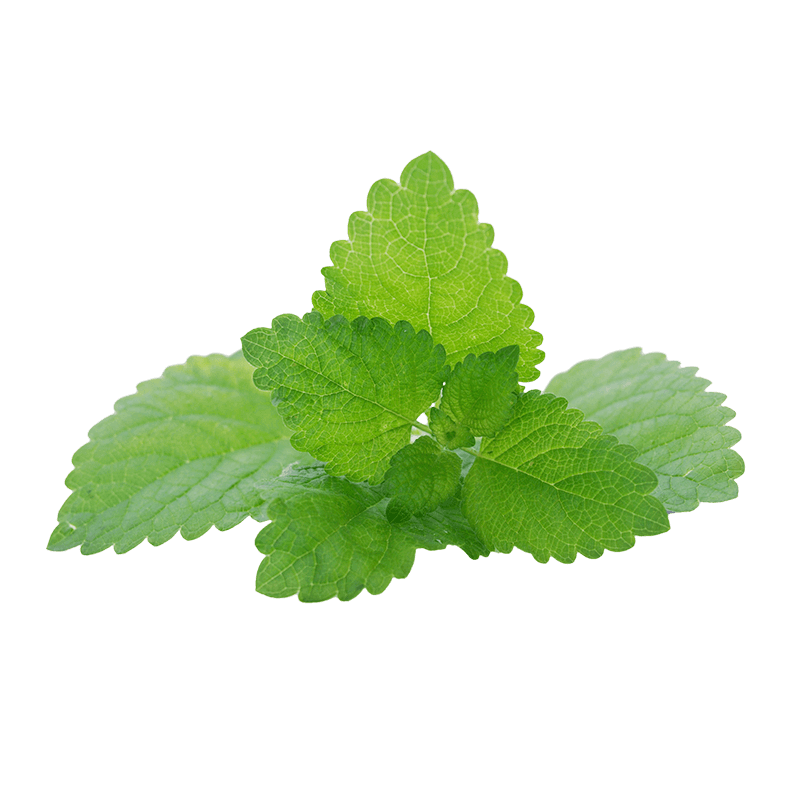Latin name
Melissa officinalis
Origin
East of the Mediterranean basin, then throughout Europe since ancient times.
Used part
The leaves.
Active components
Phenolic acids (rosmarinic acids): these substances with antioxidant properties are responsible for the anxiolytic and calming effect.
Essential oil: responsible for the aroma and contributes to the antioxidant action.
Flavonoids (apigenin): antioxidant.
Usage
The fresh or dried leaves can be used to prepare a herbal tea, and can be blended with black tea. Lemon balm is used as seasoning in numerous recipes such as fish, soup, sauces and omelettes. It has a natural preservative action. The essential oil is sometimes used to repel mosquitoes and other insects. Thanks to its antioxidant action, lemon balm protects the tissues against oxidative stress. 1-6What makes the plant interesting is its calming effect in the case of stress. It supports good cognitive function, well-being and contributes to restorative sleep. 7-14It is also used to support digestion and relieve intestinal cramps. 15-16

